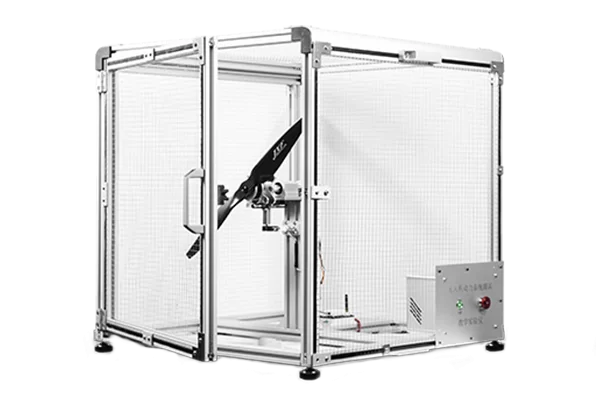Conducting Motor and Propeller Tests: Step-by-Step Guide
In the world of engineering, innovation, and aviation, the significance of motor and propeller performance cannot be overstated. Whether you're a drone enthusiast, a model aircraft hobbyist, or a seasoned engineer, the efficiency and reliability of your motor and propeller are crucial for achieving optimal results. To help you unlock the true potential of your machines, we present a comprehensive guide to the Motor and Propeller Test Kit—a powerful tool designed to measure, analyze, and fine-tune the performance of motors and propellers with precision and accuracy.

Conducting Motor and Propeller Tests: Step-by-Step Guide
Performing motor and propeller tests using the Motor and Propeller Test Kit involves several crucial steps to obtain accurate and meaningful results:
a. Setup and Calibration
Ensure the thrust stand is securely mounted on a stable surface. Calibrate the load cells and RPM sensor before each test to maintain accuracy.
b. Propeller Selection
Choose an appropriate propeller for the test, considering factors such as size, pitch, and material. The propeller must be well-balanced to avoid vibrations during testing.
c. Data Collection
Connect the motor to the power analyzer, RPM sensor, and data logger. Run the motor at different throttle levels while recording thrust, RPM, and power consumption data.
d. Data Analysis
Once the test is complete, analyze the collected data using the software provided with the kit. Plot graphs and compare performance metrics to identify the most efficient motor and propeller combination.
e. Fine-Tuning and Iteration
Based on the results, fine-tune the motor and propeller combination for optimal performance. Iterate the testing process if necessary to achieve the desired outcomes.
Recommended article:Revolutionizing Navigation: The Laser Gyroscope Unveiled
Quartz Flexible Accelerometer in Drilling: Enhancing Efficiency and Safety
What Are The Features And Specifications of The Multihead Weigher?
Three Phase Power Analyzer: Accurate Measurements for Electrical Systems
Spherical vs. Aspheric Lenses: A Clear Perspective
What is the difference between chromatic and achromatic lens?
How does a MEMS IMU work?
Applications of the Motor and Propeller Test Kit
The versatility of the Motor and Propeller Test Kit extends its applicability across various industries and interests:
Aerospace and Aviation
Engineers and researchers in the aerospace and aviation industries use the test kit to evaluate and improve the performance of propulsion systems in aircraft, UAVs, and drones.
Model Aircraft and Hobbyists
Hobbyists and model aircraft enthusiasts rely on the test kit to optimize the performance of their remote-controlled planes, helicopters, and multirotor drones.
Industrial Research and Development
The kit aids in the research and development of electric motors and propellers for industrial applications, including robotics and automation.
Educational Institutions
Educational institutions use the test kit as a valuable tool for teaching principles of aerodynamics, electric motor efficiency, and engineering design.
Conclusion
The Motor & Propeller Test Kit is a powerful and indispensable tool for engineers, researchers, enthusiasts, and manufacturers seeking to optimize the performance of motors and propellers. Its ability to measure and analyze thrust, RPM, and power consumption empowers users to make informed decisions, enhancing safety, efficiency, and reliability across various applications.
By understanding the significance of motor and propeller testing and harnessing the capabilities of the Motor and Propeller Test Kit, professionals and enthusiasts alike can propel their projects to new heights of success and innovation.
Recommended article:Applications of Custom Optical Windows
Enhance Your Seismic Monitoring with Smart Sensor 1c External Connection
What is a seismic vibration?
What is the best definition of a seismograph?
Revolutionizing earthquake detection with geophones sensors?
Exploring Geophone Technology in Vertical Land Analysis
Uncovering the Purpose of a Geophone: Explained
Related Articles








Comments
0